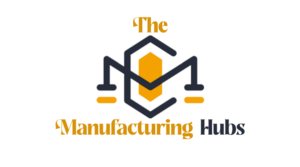In the ever-evolving field of electroplating, staying updated with the latest techniques and industry standards is crucial. Electroplating training services play a vital role in ensuring that professionals in the metal finishing industry are well-equipped with the necessary skills and knowledge. However, a one-size-fits-all approach to training is often inadequate. This is where the importance of a needs assessment in electroplating training comes into play. By incorporating the use of high power rectifier systems and conducting a thorough needs assessment, training providers can develop custom curriculums that meet the specific requirements of their clients.
Understanding the Basics of Needs Assessment
A needs assessment is a systematic process used to determine and address the gaps between the current and desired knowledge, skills, and abilities within a workforce. In the context of electroplating training services, this process involves identifying the specific training needs of individuals or groups and tailoring the curriculum accordingly. The goal is to ensure that the training is relevant, effective, and directly applicable to the participants’ roles and responsibilities in metal finishing.
The Role of Custom Curriculum Development
Custom curriculum development is the process of designing training programs that are tailored to the unique needs and goals of a specific audience. For electroplating training services, this means creating courses that address the particular challenges and requirements of the metal finishing industry. By focusing on the specific needs identified through a needs assessment, training providers can deliver more effective and impactful training experiences.
Steps in Conducting a Needs Assessment
Conducting a needs assessment involves several key steps:
- Identify Stakeholders: Determine who will benefit from the training and who will be involved in the assessment process. This typically includes employees, managers, and training coordinators.
- Gather Data: Collect information about the current skills, knowledge, and abilities of the target audience. This can be done through surveys, interviews, observations, and reviewing performance data.
- Analyze Data: Examine the data to identify gaps between current and desired performance levels. This analysis helps to pinpoint specific areas where training is needed.
- Determine Training Objectives: Based on the analysis, define clear and measurable training objectives that address the identified needs.
- Develop a Training Plan: Create a detailed plan that outlines the curriculum, including topics, methods, materials, and timelines.
- Implement and Evaluate: Deliver the training and assess its effectiveness through feedback and performance evaluations.
Importance of Tailored Training in Metal Finishing
Metal finishing training is a specialized field that requires a deep understanding of various techniques and processes. Generic training programs often fall short in addressing the specific challenges faced by professionals in this industry. By conducting a needs assessment and developing a custom curriculum, training providers can ensure that the training is relevant and directly applicable to the participants’ work. This approach, which includes understanding the use of rectifier power supply systems, not only enhances the learning experience but also improves the overall quality and efficiency of metal finishing operations.
Benefits of Custom Curriculum Development
Custom curriculum development offers several advantages for electroplating training services:
- Relevance: Training content is directly aligned with the specific needs and goals of the participants, making it more relevant and applicable to their work.
- Engagement: Tailored training programs are more engaging and interesting, as they address real-world challenges and scenarios that participants encounter in their jobs.
- Effectiveness: By focusing on the specific needs identified through a needs assessment, custom curriculums are more effective in closing the knowledge and skill gaps.
- Flexibility: Custom training programs can be adapted to fit different learning styles, schedules, and formats, making them more flexible and accessible.
- Return on Investment: Tailored training programs are more likely to deliver a higher return on investment by improving performance, productivity, and job satisfaction.
Implementing Effective Electroplating Training Services
To implement effective electroplating training services, it is essential to follow best practices in needs assessment and custom curriculum development. This includes:
- Collaboration: Engage stakeholders in the needs assessment process to ensure that their perspectives and insights are considered.
- Continuous Improvement: Regularly review and update the training curriculum to reflect changes in industry standards, technologies, and best practices.
- Feedback Mechanisms: Establish feedback mechanisms to gather input from participants and continuously improve the training program.
- Practical Application: Incorporate hands-on training and real-world scenarios to enhance the practical application of the skills and knowledge gained.
- Expert Instructors: Utilize experienced and knowledgeable instructors who can provide valuable insights and guidance.
Conclusion
In the competitive and rapidly changing field of metal finishing, investing in high-quality electroplating training services is essential. By conducting a thorough needs assessment and developing a custom curriculum, training providers can ensure that their programs are relevant, engaging, and effective. This approach not only benefits the participants but also contributes to the overall success and growth of the industry. For more information on tailored training solutions in electroplating and metal finishing, visit theadvint.com.
